When we moved into our home just outside of Akron, the side yard was beyond difficult to maintain. A steep thicket of weeds, the seemingly unusable hillside was an eyesore and a headache, especially after taking more than one tumble. A new, affordable method for terracing helped me to establish not only a garden, but a backyard ecosystem and a soulful refuge.
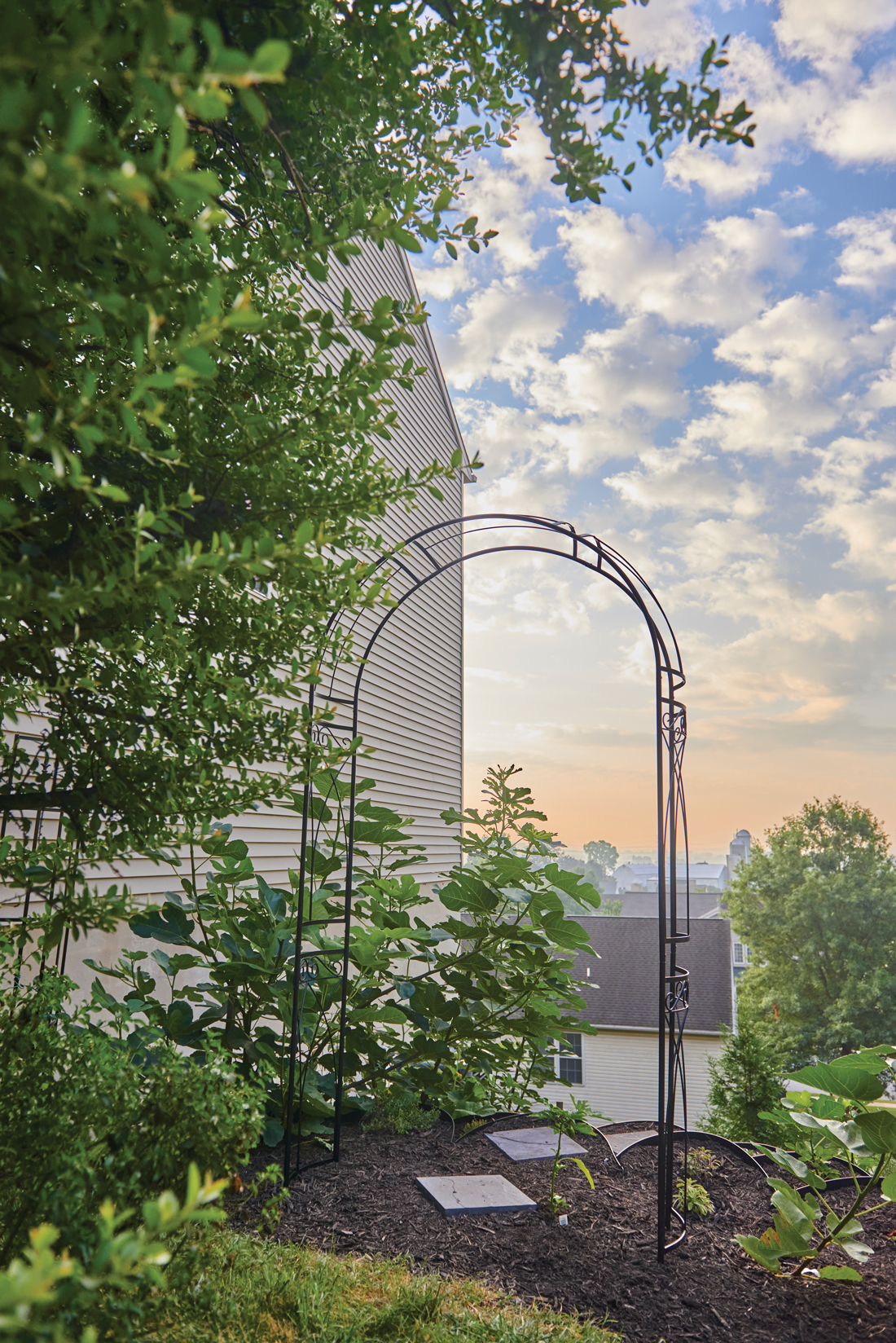
Yes, the view is quite nice, but the side yard left a lot to be desired, as it plummets straight down the hill. I solved the problem with Dirt Lockers, which allowed me to transform the eyesore into a garden.
Problems to Solve
When we moved into our townhouse on a hill in 2016, there were problems to address. The back of our home faces south, providing us with stunning views of the fields of Farmersville. The trade-off is maintaining a steep hill loaded with weeds.
Like many of our neighbors, I’d written the space off as unusable; our HOA and local township both view it as a nuisance. Problem number one is the slope is too steep to mow and, if established, grass would provide zero return for all the work involved. Plus, it would still be unusable.
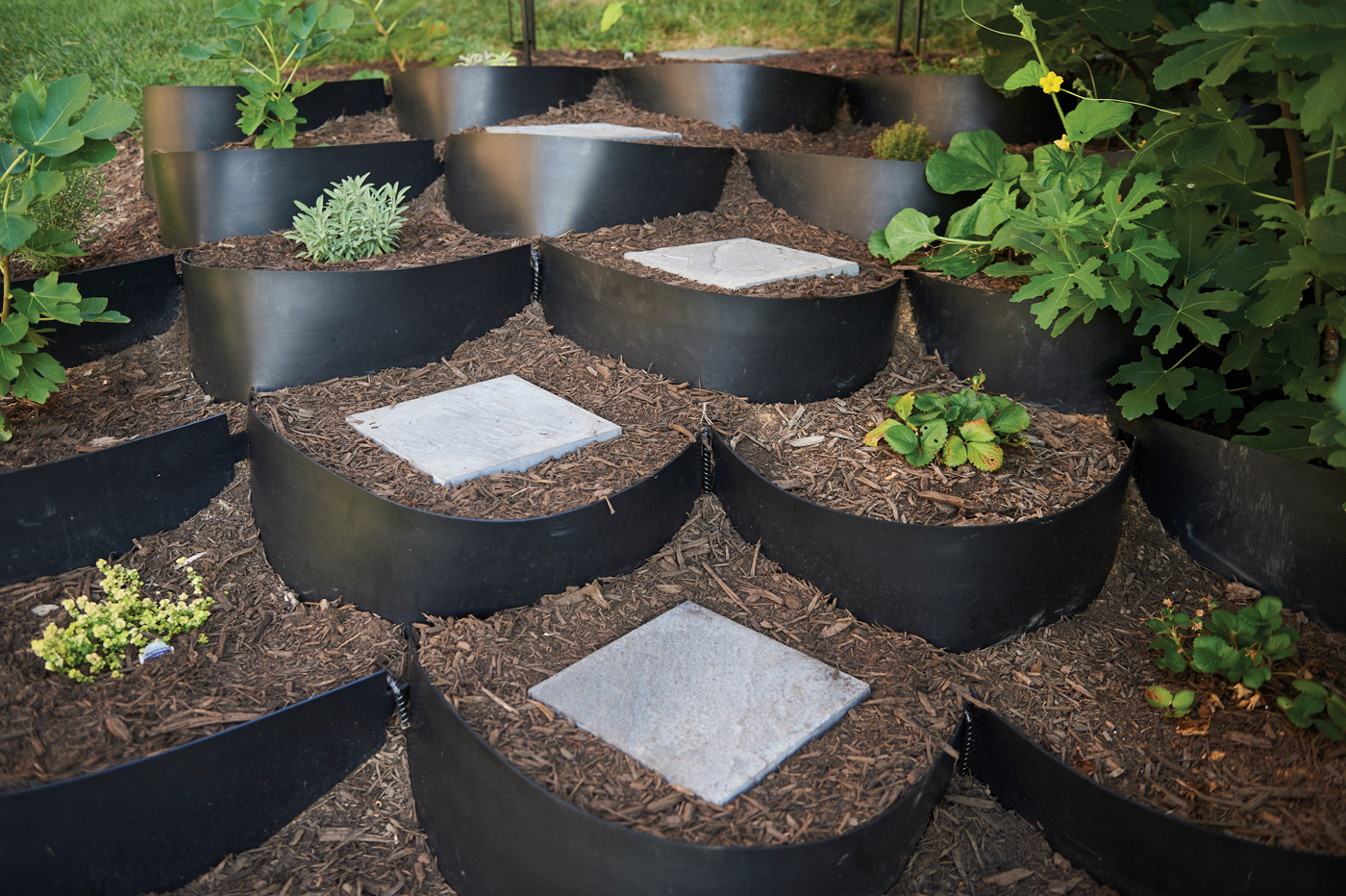
The Dirt Lockers unlocked usable planting space I never anticipated or envisioned. I drafted a garden layout, keeping the center open for increased light and air movement. For the understory areas, I sought cold-hardy perennials as companion plants. In the middle of summer, herbs go on sale at close-out prices for as little as $1, so I loaded up last summer on an assortment of perennials to enhance cooking for years to come.
A second problem arose with the need to expand the flower garden at the front of our house. After several years of meeting growers and producers in Lancaster County, I’ve amassed dozens of stories and plants. Propagated fig trees started as pencil-sized cuttings and have grown into 6-foot-tall trees. The initial four varieties weren’t enough, more soon followed. Saffron, kiwi berries, hops and rhubarb … soon a collection was formed.
Terraced Gardening
A solution started to materialize after observing the way Waltz Vineyard’s grapes grew on their hill in Manheim. Noting the advantages of sloped terrain prompted me to think of my steep hillside. Winemaker Jan Waltz explained that the staggered height and aspect, or the direction of planting, increases sunlight and airflow to mitigate pests and disease in a vineyard. Planting on land with a southern exposure offers full sun with protection from winter’s harsh north winds. It occurred to me that our hillside formed a microclimate that allowed cool air to settle below, provided protection from western winds and enabled the exposed foundation to retain warmth, which was evident, as it’s where snow first melts.
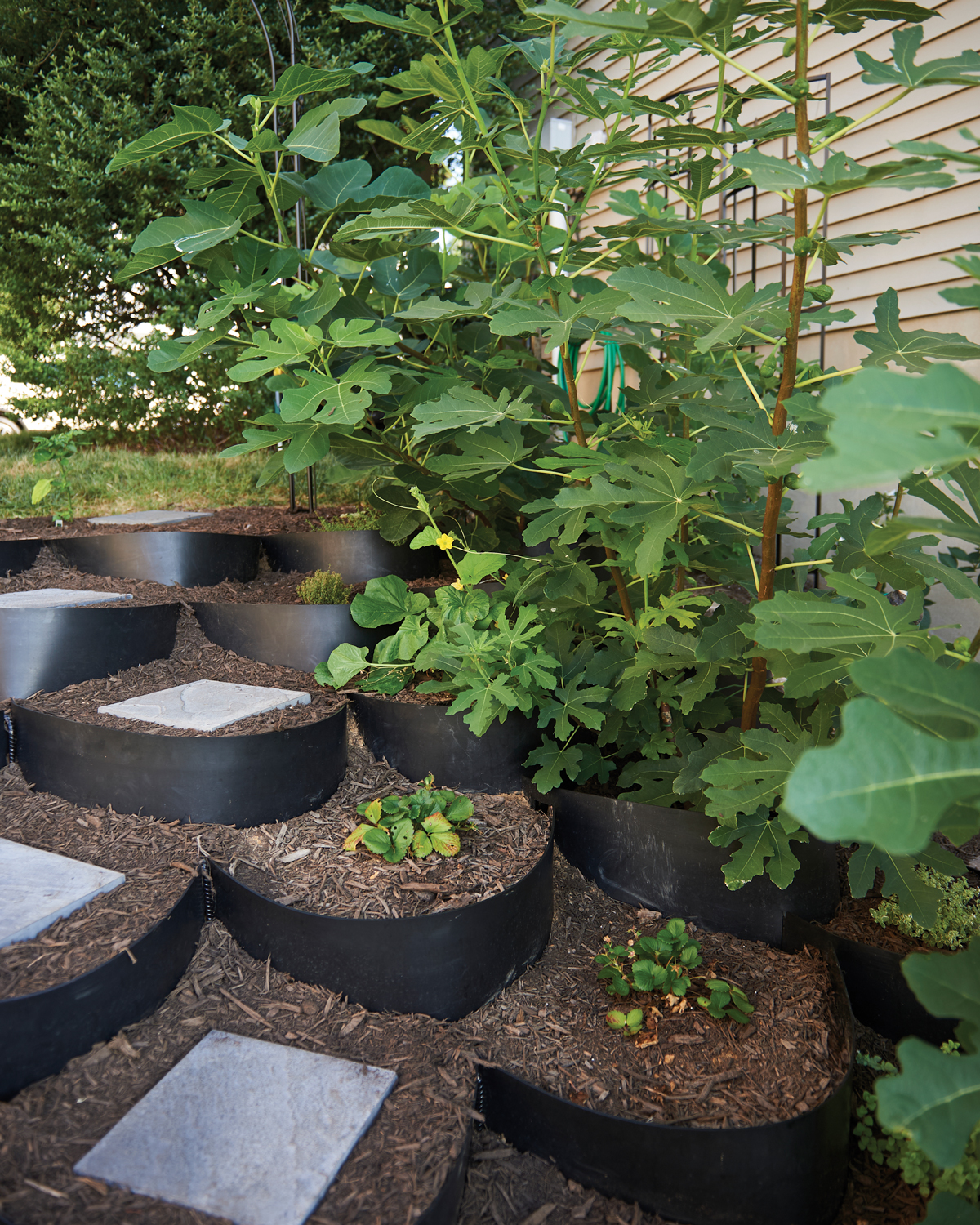
A potager garden follows a few rules. At its core, it’s a blend of form and function. Designed with the kitchen in mind, such a garden can be used to grow edible plants, all the while it maintains an aesthetic of defined spaces, paths and focal points. I was also able to incorporate fig trees into my garden. Last year’s yield was delicious!
Traditionally, terraced spaces are costly and labor-intensive since they are created with stone or railroad ties. Unfortunately, the latter eventually rot and are usually coated in tar. Both are susceptible to issues with drainage, freezing and maintenance. However, an innovation known as Dirt Locker® caught my attention. Made in the U.S., using recycled plastic, these cells interlock to form a grid held in place with rebar J-hooks. Filled with soil, they can be installed on slopes up to 45 degrees.
Founder and designer, Mark Trebilcock, developed the idea in California, where water conservation is necessary. Dirt Locker “saves water, improves the growth success of plants … requires no special hardware, reduces erosion and is environmentally friendly.” The matte-black cells and extra surface area aid in heat absorption to bolster the growing season. Soil can be amended or fertilized uniquely in individual “lockers” for specific plant needs, such as adding lime for asparagus. Once installed, a staggered column can be used as stairs, making it much easier to traverse the hillside. Terracing the hill added enormous value to how we enjoy our home and changed how we interact with the space.
To date, I have installed 60 Dirt Lockers, filling each with a topsoil-compost blend from Oregon Dairy. Before installation, I upgraded the downspout drain, from an above-grade 4-inch corrugated pipe to Schedule 40 PVC below-grade.
Rain Barrels: A Must!
Carrying water up and down the terrace quickly grew tiresome and getting a garden hose to reach was a stretch. Motivated to work smarter, I installed a rain barrel at the top of the hill. Like magic, it tops up after every rain; gravity offers enough pressure to make the work easier than hand-carrying water.
There is a litany of benefits beyond convenience, too. Rainwater is free, renewable and absent of chlorine or softening agents (salt) that affect plant health and local waterways. Reducing rain runoff is another plus, as it’s the primary cause of flooding and carries pollutants like sediment, manure, pet waste and automotive fluids into local waterways. In West Earl Township, we’re connected to the municipal water system and billed by volume. While our household usage is low, rainwater conservation is beneficial during droughts. The same is true for water supplied by underground wells.
To solve those issues, I purchased an EarthMinded Rain Station 45-gallon rain barrel made of black recycled plastic. Installed correctly, it won’t overflow. It has a spigot for filling watering cans, as well as a hose connection at the bottom. Darker colored plastic prevents algae growth, while the lid keeps mosquitos out. (Before installing, verify your roof is suitable for using rainwater in a produce garden. That extends to avoiding asbestos shingles, lead paint and moss treatments.) Installing crushed stone and 18-by-18-inch slabs of stone from Stauffers of Kissel Hill leveled the ground for stability.
Each fall, the barrel should be drained and cleaned (freezing water could expand and crack it).
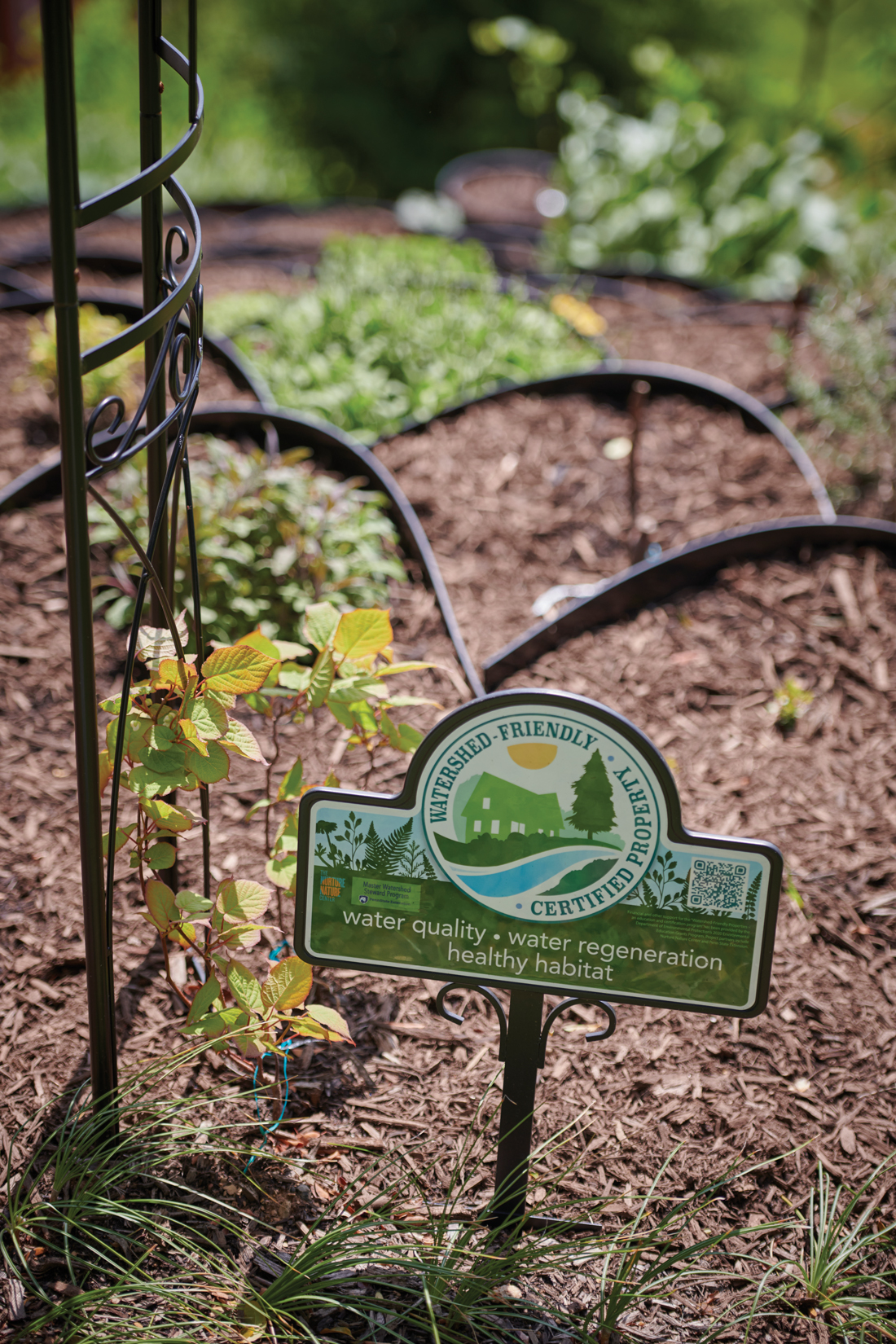
The Watershed-Friendly Property Certification Program, offered as “a collaboration between the Penn State Extension Master Watershed Steward Program and Nurture Nature Center.”
In my garden, gravity works favorably, but if added water pressure is needed, a water pump can be added, many of which are solar powered. To calculate how much rainwater you can capture, for every inch of rain, multiply your roof area by .6 to convert the area into gallons. Half an inch of rain is more than enough to fill my 45-gallon barrel.
Enriching Compost
Further extending our garden into an ecosystem, compost is another easy use of otherwise discarded resources. Rather than pay a waste service to haul away produce and yard trimmings to an incinerator, those items can save a gardener money to enrich the soil.
Composting consists of four key components: water, oxygen, carbon and nitrogen. Carbon, or brown items, comes in the form of dead leaves, sticks, sawdust or shredded paper. Nitrogen, or green elements, are typically easier to access, as they are found in the form of yard trimmings, coffee grinds and fruit and vegetable scraps.
Making compost with these types of materials should be odorless. Compost needs to be turned regularly to agitate the mix. A two-compartment compost bin alternates the queue while keeping pests at bay. At temperatures over 140 degrees, hot composting kills seeds, weeds and harmful bacteria. Hot composting dropped produce or seasonal dieback reduces the risk of pests the following growing season. The process can be as short as a few weeks for delivering nutrient-rich, odor-free compost.
Fig Trees
Fig trees are the principal interest in my garden. Most of my in-ground trees were propagated from inexpensive cuttings purchased from Off the Beaten Path Nursery in Lancaster. Ten varieties of cold-hardy trees are planted in-ground. Propagating figs is inexpensive but commands patience.
The trees are spaced towards the perimeter of the garden for airflow and light. The Dirt Lockers add warmth to the roots, a key element for productivity. Last fall, our maple tree dropped leaves while the fig trees were still green.
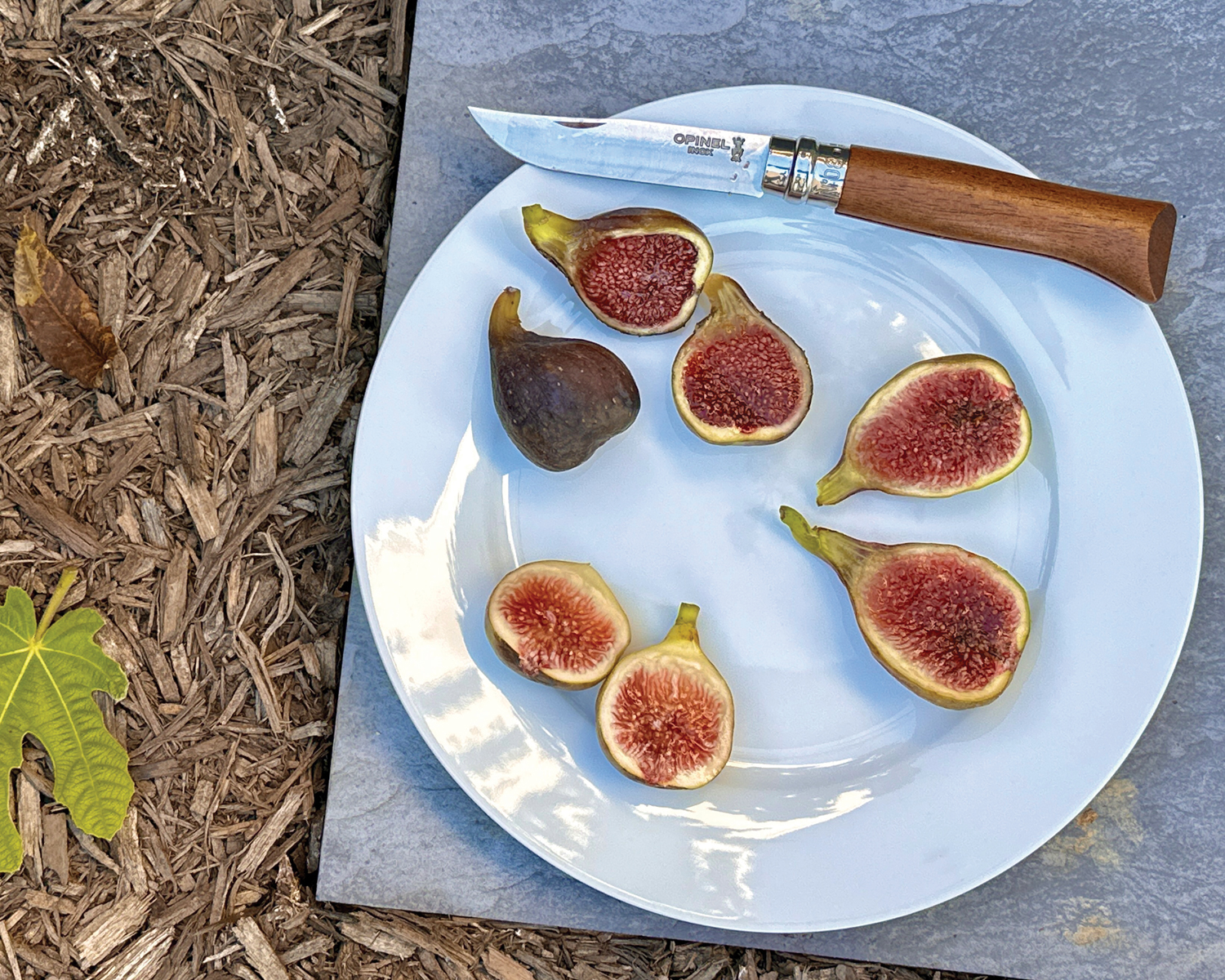
Three varieties of ripe figs, clockwise from top: JFE Black Madeira (Not), Longue d’Août and LSU Tiger.
Along with fresh berries, our cheese boards have gotten a significant increase in interest, flavor and richness with the addition of fresh figs.
A Humble Backyard Fruit and Herb Garden
Reading up on the care of seemingly exotic plants like fruit and herbs and tending to them are joyful parts of the process. Watching each plant develop is something I look forward to with great hope. It’s made better when the plant produces a yield whose unexpected flavors can be experienced and shared with others.
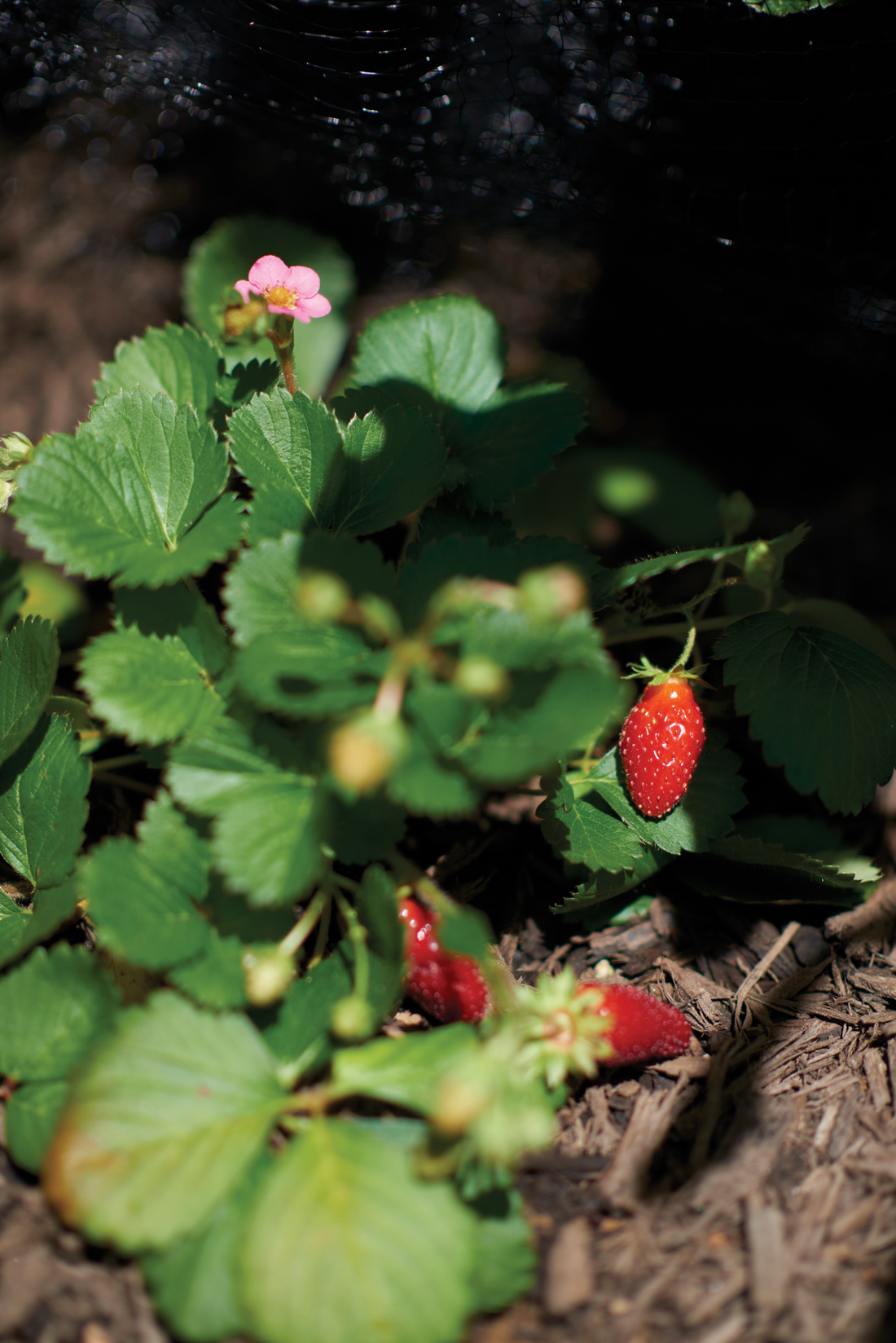
Everbearing fruits produce yields throughout the season. Everbearing strawberries were an easy choice
My little project only goes to prove that with a little research and sweat equity, the ugliest, most unusable land can bear fruit in more ways than one. What we ended up with is essentially a terraced potager garden. (“Potager” is French for “kitchen garden.”) Such gardens date back to medieval monasteries, where herbs, flowers and other plants were grown for culinary and medicinal purposes. In times when cooking was labor intensive, such gardens brought cooking ingredients to the doorstep.
In addition to providing fruit, herbs and other goodies, the added garden space provides a place to relax and alleviates the most arduous and frustrating elements of weekly yard maintenance. The process has been deeply rewarding. Did I mention the food is delicious?





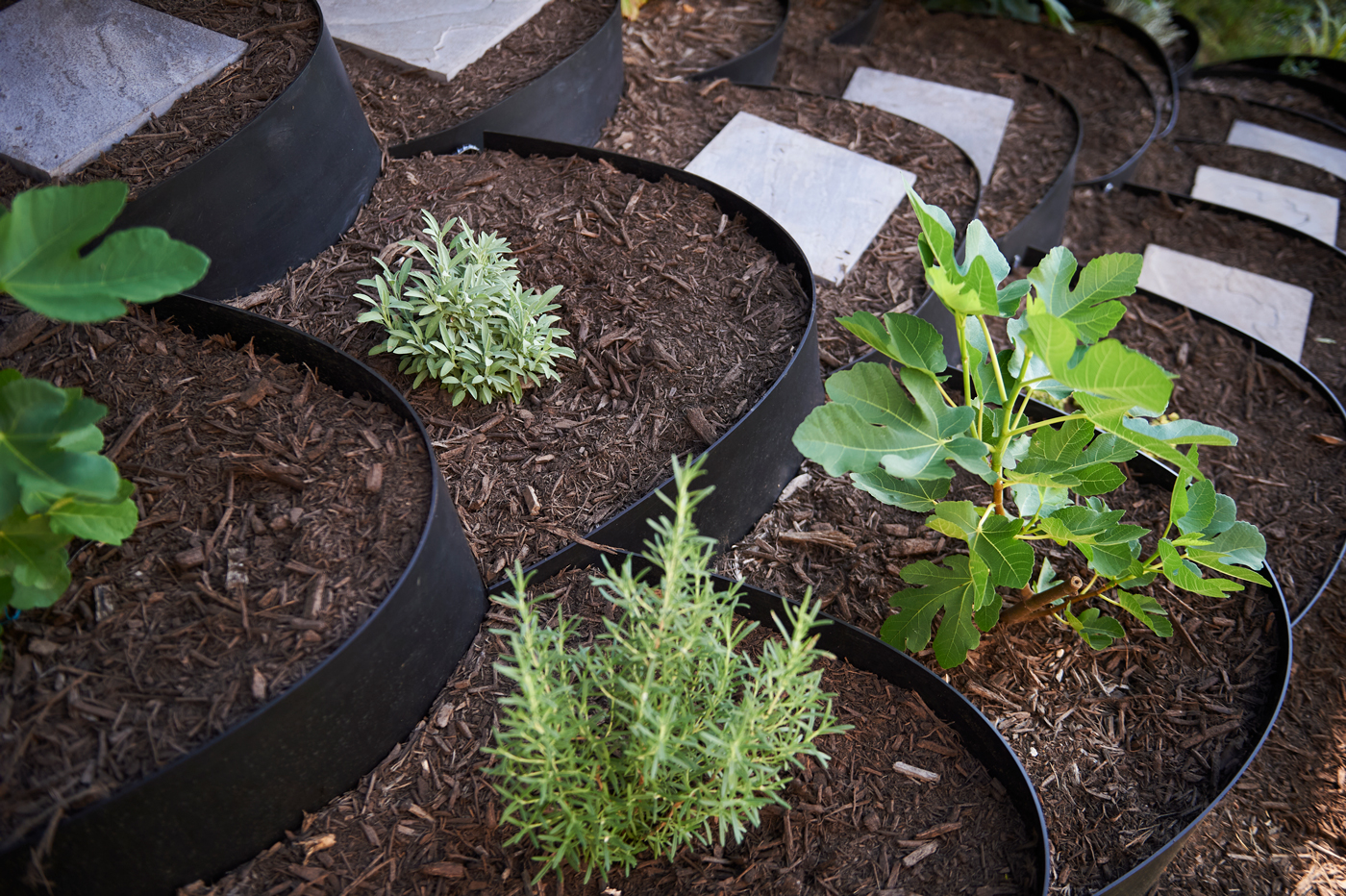
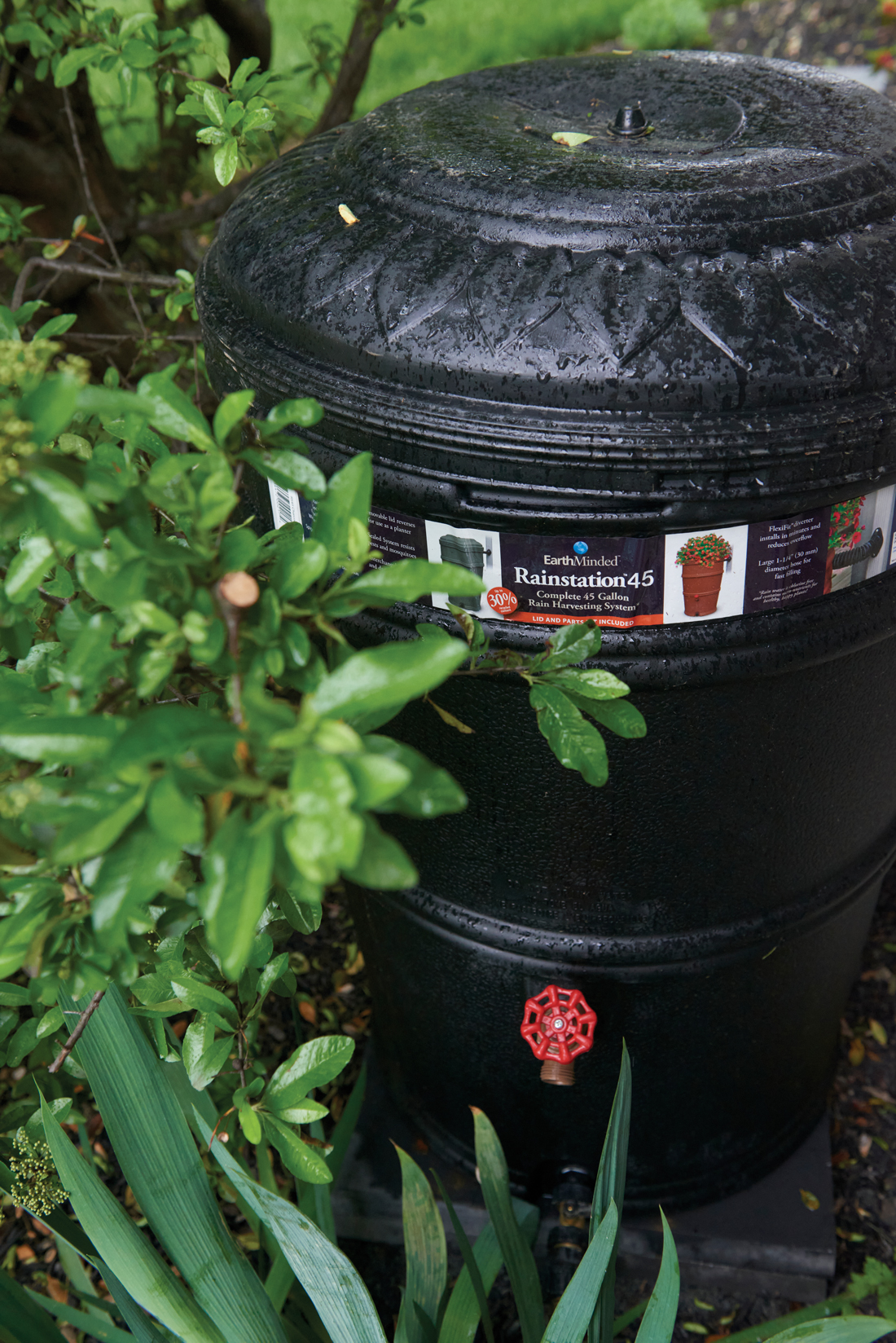
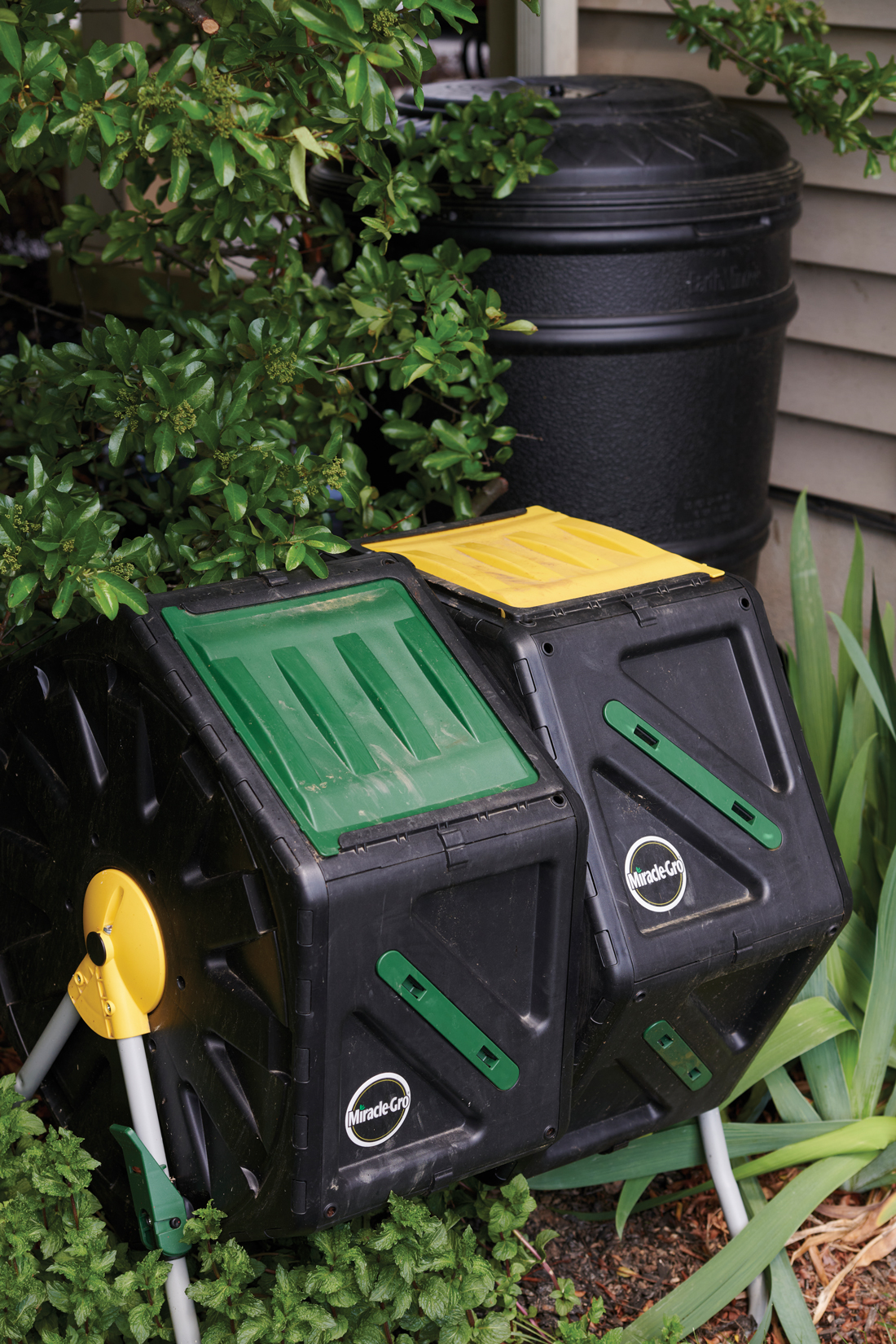
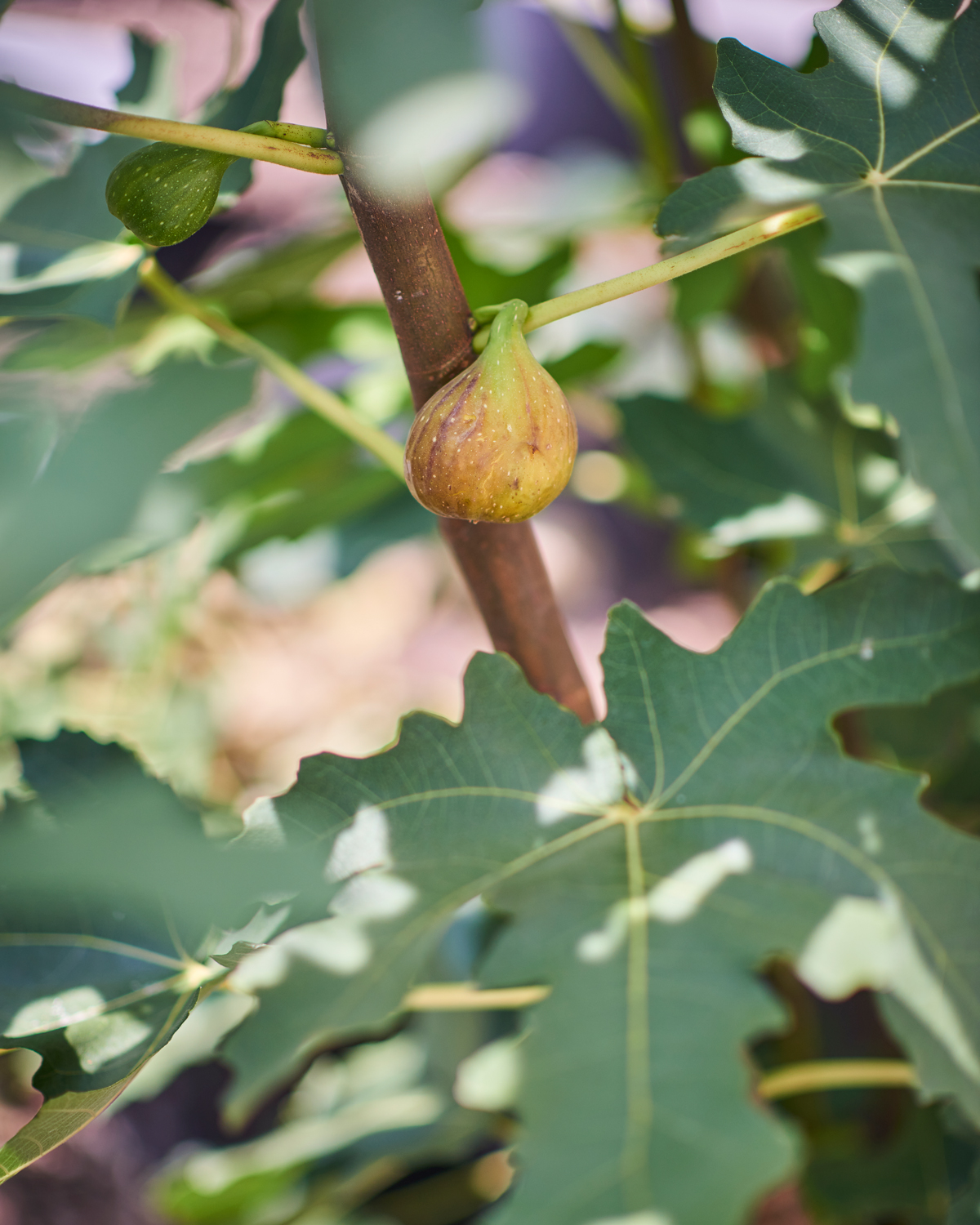
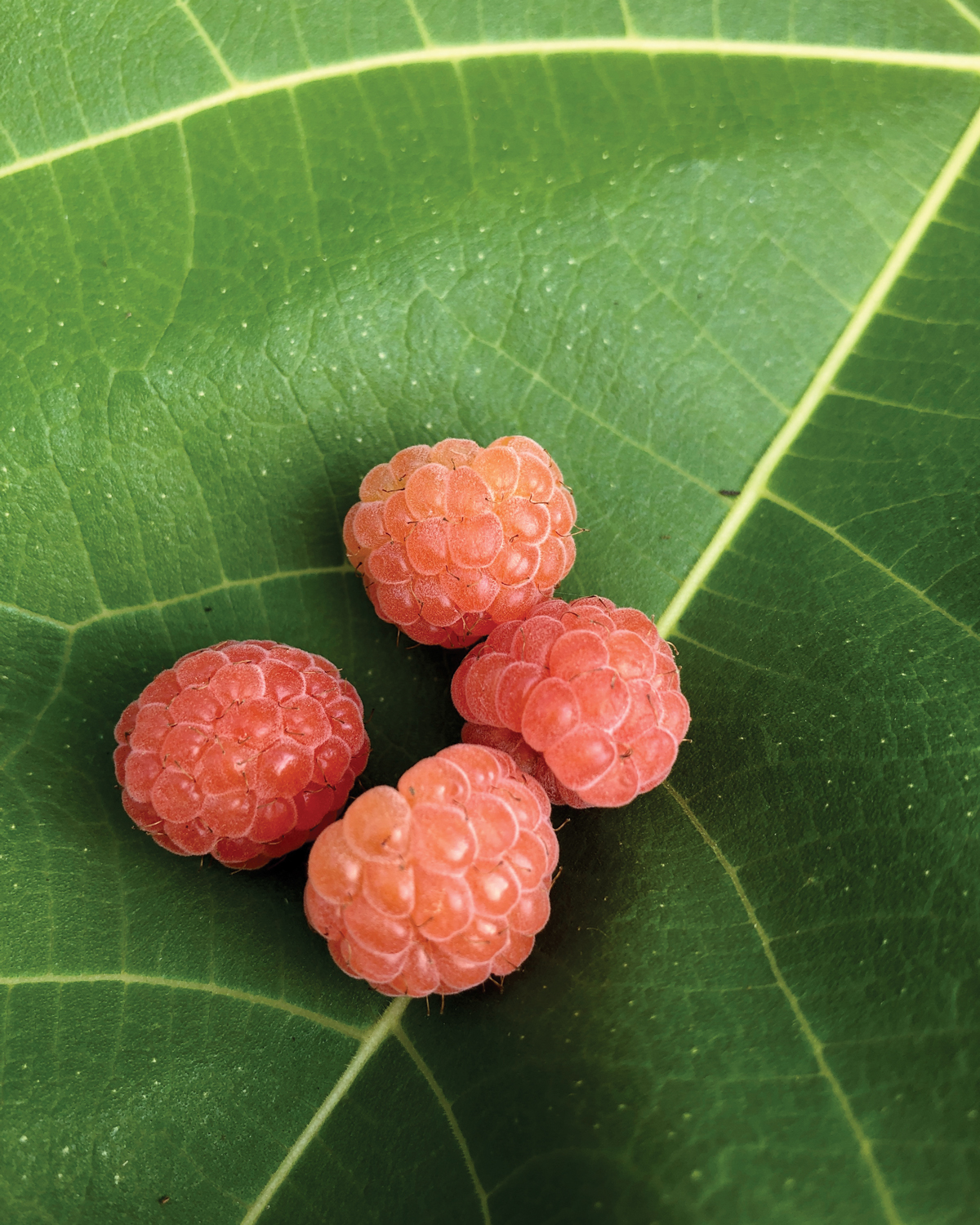

SHARE
PRINT